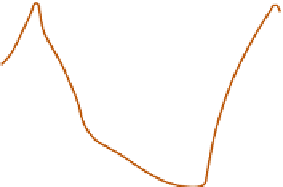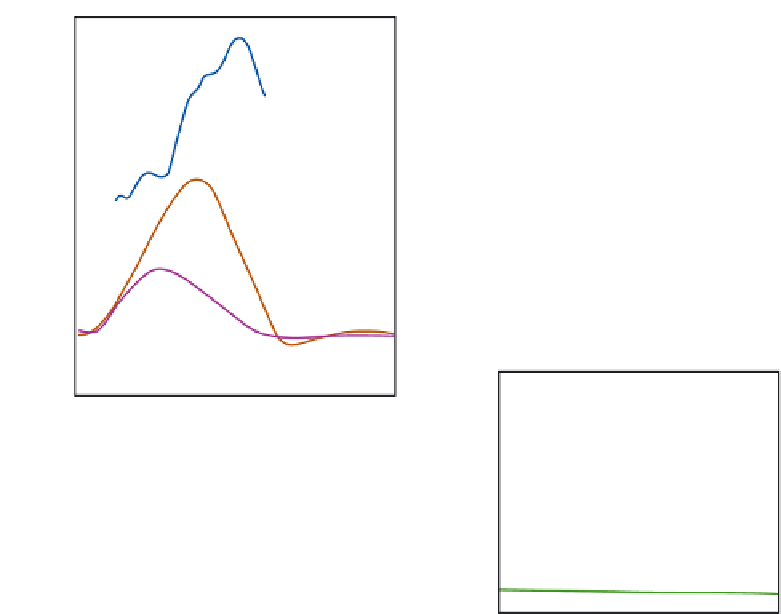Geoscience Reference
In-Depth Information
(A)
Basalt
8
180
Wind
80
Surface
1cm
3cm
7cm
6
160
70
4
60
140
Rn
2
600
H
50
120
0
400
40
100
200
G
16
20
24
04
Hour
08
12
16
0
(B)
Sand-dune
-200
180
70
04
08
12
16
20
24
04
Surface
60
140
Hour
Figure 12.3
Energy flows involved at a dry-lake
surface at El Mirage, California (35°N), on 10-11
June 1950. Wind speed due to surface turbulence
was measured at a height of 2m.
Source: After Vehrencamp (1953) and Oke (1978).
50
120
Air
40
30cm
100
30
75cm
80
temperatures reached on dark-colored basalt and
light-colored sandstone are almost identical,
but the greater thermal conductivity of basalt
(3.1W m
-1
K
-1
) versus sandstone (2.4W m
-1
K
-1)
gives a larger diurnal range and deeper penetra-
tion of the diurnal temperature wave, to about 1m
in the basalt. In sand, the temperature wave is
negligible at 30cm due to the low conductivity of
intergranular air. Note that the surface range of
temperature is several times that in the air. Sand
also has an albedo of 0.35, compared with about
0.2 for a rock surface.
12
16
20
24
04
08
12
Hour
Figure 12.4
Diurnal temperatures near, at and
below the surface in the Tibesti region, central
Sahara, in mid-August 1961. A: At the surface and
at 1cm, 3cm and 7cm below the surface of a basalt.
B. In the surface air layer, at the surface and at
30cm and 75cm below the surface of a sand-dune.
Source: After Peel (1974). Courtesy of Zeitschrift für
Geomorphologie.
between 06:00 and 16:00 hours, almost all of the
net radiation is absorbed by the water layer (i.e.,
Δ
W is positive) and at all other times the ocean
water is heating the air through the transfer of
sensible and latent heat of evaporation. The
afternoon maximum is determined by the time of
maximum temperature of the surface water.
2
Water
For a water body, the energy fluxes are very
differently apportioned.
Figure 12.5
illustrates the
diurnal regime for the tropical Atlantic Ocean
averaged for 20 June to 2 July 1969. The simple
energy balance is based on the assumption that the
horizontal advective term due to heat transfer by
currents is zero and that the total energy input is
absorbed in the upper 27m of the ocean. Thus,
3 Snow and ice
Surfaces that have snow or ice cover for much of
the year present more complex energy budgets.
The surface types include: ice-covered ocean;



































































































